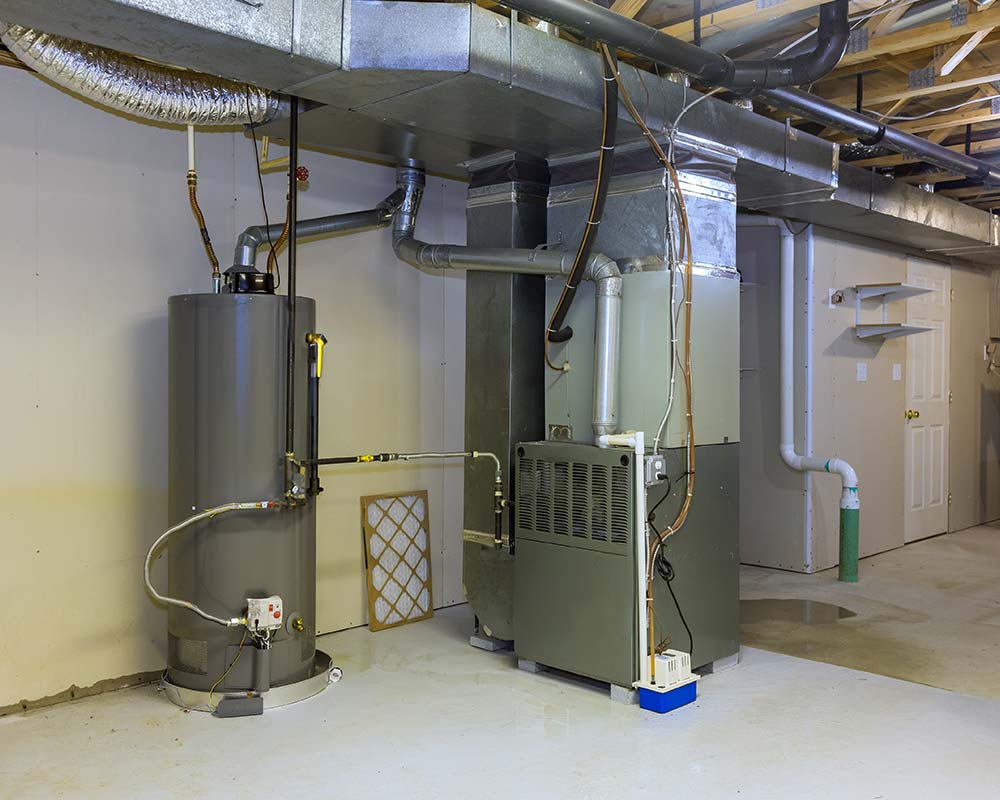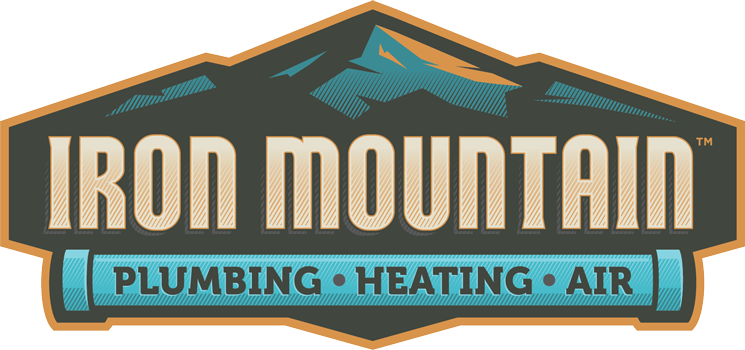
Insulate Your Water Heater
One of the most effective ways to improve your water heater’s efficiency is by insulating it with a high-quality jacket or blanket designed for this purpose. This simple yet impactful step minimizes heat loss, allowing your water heater to maintain temperature without overworking. When choosing an insulation blanket, ensure it’s rated with an R-value of at least 8 to provide maximum thermal resistance. You’ll typically find this information on the product label.
Begin by measuring your water heater to determine the correct size of the insulation. Wrap the jacket around the heater, making certain the seams align perfectly. Secure it with adhesive strips or tape, but avoid covering the top, bottom, thermostat, or burner areas. This guarantees safety and prevents interference with the heater’s operation.
Lower the Thermostat Setting
Lowering the thermostat setting on your water heater to 120°F can greatly reduce energy consumption and prevent scalding while providing sufficient hot water for most household needs. By reducing the temperature from the typical factory setting of 140°F, you can cut energy usage by 4 to 22 percent annually. This adjustment conserves energy and minimizes the risk of burns, which is especially important if you’re caring for the elderly or children.
To make this change, locate the thermostat dial on your water heater. Electric heaters usually have two dials—one at the top and one at the bottom. The dial is typically near the base for gas heaters, marked with ‘Hot,’ ‘Warm,’ and ‘Vacation’ settings. Turn the dial to ‘Warm’ or approximately 120°F. A thermometer is used to verify the water temperature from a faucet after a few hours to ascertain the accuracy.
Adjusting the thermostat is straightforward and requires minimal tools and expertise. By implementing this change, you’ll optimize your water heater’s efficiency and contribute to a safer and more sustainable environment for those you serve.
Perform Regular Maintenance
Regular water heater maintenance guarantees peak efficiency and longevity, preventing costly repairs and unexpected breakdowns. Start by inspecting the temperature and pressure relief valve. Lift the lever to verify water flows freely through the discharge pipe. If it’s stuck or leaking, replace it promptly, as this component prevents excess pressure and temperature buildup.
Next, examine the anode rod, which protects the tank from corrosion. Turn off the power supply and water, then remove the rod for inspection. If it’s considerably corroded or reduced to less than half an inch, replace it to extend the tank’s life.
Check for leaks around the heater, especially near connections and fittings, which could indicate worn-out gaskets or seals. Tighten loose fittings or replace faulty components as needed. Inspect insulation around the tank and pipes; adequate insulation prevents heat loss, improving efficiency.
Flush the Tank Annually
Flushing the tank annually removes sediment buildup, enhancing your water heater’s performance and extending lifespan. Sediment, primarily composed of minerals like calcium and lime, settles at the tank’s bottom, insulating water from the heating element. This forces your heater to work harder, increasing energy consumption and the risk of overheating. To serve others effectively, follow these steps to guarantee your water heater operates at peak performance.
Start by turning off the water heater and allowing it to cool for safety. Shut off the cold water supply valve to prevent new water from entering. Connect a garden hose to the tank’s drain valve and direct the other end to a safe drainage area, such as a floor drain or outside. Open a nearby hot water faucet to release pressure, then open the tank’s drain valve. Allow the tank to empty completely, flushing out sediment.
Once drained, close the drain valve, remove the hose, and reopen the cold water supply. Turn the heater back on. This practical maintenance task guarantees efficient operation, reduces energy costs, and extends the heater’s life, allowing you to serve others who rely on hot water.
Install Heat Traps
Installing heat traps on your water heater’s pipes can minimize heat loss and improve overall efficiency. Heat traps are specially designed fittings that allow water to flow into the tank but restrict unwanted convection currents from escaping. Installing these guarantees that the heat generated stays within the system, reducing energy waste.
To install heat traps, first, verify your water heater is turned off and cooled down for safety. Locate the cold water inlet and the hot water outlet pipes. You’ll need two heat traps—one for each pipe. Remove the existing nipples, if any, and replace them with the heat traps. These traps usually have a one-way valve or a loop design. Make certain the heat traps are installed in the correct direction, as marked on the device. Tighten them securely using a wrench, but be careful not to overtighten, as this can damage the fittings.
Once installed, restore power to your water heater and check for leaks. By incorporating heat traps, you’re taking a proactive step to conserve energy and extend the life of your water heater, ultimately contributing to a more sustainable household.
Upgrade to a Modern System
Upgrading to a modern water heater system can greatly enhance efficiency, reduce energy costs, and provide a more reliable hot water supply for your home. Shifting to a tankless or heat-pump water heater offers significant advantages. A tankless system heats water on demand, eliminating standby heat loss and ensuring you only use energy when you need hot water. This saves energy and provides a continuous supply of hot water, perfect for serving your household without interruption.
Consider a heat pump water heater, which uses electricity to move heat rather than generate it. This option is highly efficient, consuming less than half the energy of conventional models. When selecting a new system, focus on the Energy Factor (EF) rating; a higher EF means better efficiency. Additionally, check for systems with smart technology features, such as Wi-Fi connectivity, allowing remote control and monitoring to optimize performance.
Ensure professional installation to maximize the system’s potential and extend its lifespan. By upgrading, you make a practical investment that benefits your family and the environment. This proactive step reflects your commitment to serving others by conserving resources and ensuring comfort at home.
Use Efficient Fixtures
Enhance your water heater’s efficiency by integrating low-flow fixtures that reduce water consumption without sacrificing performance. Opt for WaterSense-labeled showerheads and faucets. These fixtures are designed to lower water flow, averaging around 2 gallons per minute, compared to standard models that use 2.5 gallons or more. This small adjustment can notably decrease the demand for your water heater, translating into energy savings.
Install aerators on your faucets to further minimize water usage. Aerators add air to the water stream, maintaining pressure while using less water. Look for models with a flow rate of 1.0 to 1.5 gallons per minute. You’ll conserve water while ensuring a steady, reliable stream for all your needs.
Consider using thermostatic mixing valves in your bathrooms. These valves maintain a constant water temperature, reducing the need for frequent adjustments and thereby conserving energy. They also enhance safety by preventing sudden temperature spikes.
Reduce Hot Water Usage
Incorporating strategies to reduce hot water usage complements efficient fixtures by minimizing energy consumption and lowering utility bills. Start by insulating your water heater and hot water pipes. This action reduces heat loss, ensuring hot water stays warm longer and requires less energy to reheat. Adjust the thermostat on your water heater to 120°F (49°C). This setting is sufficient for most household needs and prevents overheating, which saves energy.
Be mindful of your hot water habits. Use a timer to encourage shorter showers, and consider installing low-flow showerheads to decrease water usage without sacrificing comfort. Similarly, only run dishwashers and washing machines with full loads. For washing clothes, use cold water settings whenever possible, as they clean effectively and reduce the demand on your water heater.
Repair any leaks promptly. A dripping faucet or leaking showerhead wastes water and increases energy use. Regularly check for leaks and fix them immediately to maintain efficiency. Educate others in your household about these practices, fostering a collective effort to conserve hot water. By taking these steps, you’ll improve your water heater’s efficiency and serve your household by reducing environmental impact and utility costs.
Consider Renewable Energy Options
Exploring renewable energy solutions, such as solar or heat pump water heaters, can greatly enhance your water heating system’s efficiency and sustainability. Solar water heaters use sunlight to heat water, considerably reducing reliance on conventional energy sources. They’re typically installed on roofs, where collectors absorb solar energy, transferring it to a water storage tank. These systems can cut your water heating costs by 50% to 80%, making them an excellent investment for the environment and your budget.
Heat pump water heaters, on the other hand, draw heat from the air or ground and use it to warm your water. They require electricity to move heat rather than generate it, which makes them two to three times more efficient than traditional electric water heaters. Installation involves positioning the heat pump unit in a space with ample air circulation, like a basement or garage, ensuring ideal performance.
Both systems may require an upfront investment and professional installation. However, they offer long-term savings and reduced carbon footprint. Choosing a renewable energy option aligns with a commitment to sustainability and serving others by contributing to a cleaner, healthier planet for future generations.
Monitor and Adjust Usage Patterns
After investing in renewable energy solutions, monitoring and adjusting your water heater’s usage patterns is important to guarantee maximum efficiency and cost savings. Start by tracking your household’s hot water consumption throughout the day. Use a smart meter or install a water usage monitor to gather data on when and how much hot water is used. This information helps pinpoint peak usage times and identify any patterns or inefficiencies.
Once you have this data, adjust your water heater’s settings to match your household’s needs. Lower the thermostat to 120°F (49°C), a safe temperature that reduces energy consumption. If your utility provider offers time-of-use pricing, schedule the water heater to operate more during off-peak hours when energy rates are lower.
Encourage household members to adopt water-saving habits, such as taking shorter showers and using cold water for laundry whenever possible. Implementing efficient fixtures, like low-flow showerheads and faucet aerators, can also make a significant difference. By actively monitoring and adjusting your water heater’s usage, you contribute to energy conservation and create a more sustainable environment, ultimately benefiting those around you.
Conclusion
To maximize your water heater’s efficiency, you must meticulously manage multiple measures. Start by insulating and lowering the thermostat to limit heat loss. Regularly rinse and refresh the tank to remove residue. Utilize efficient fixtures and reduce unnecessary usage to conserve energy. Explore renewable options, like solar, for sustainable savings. Finally, frequently fine-tune and track your usage patterns to guarantee peak operation. By doing so, you’ll save substantial sums and support sustainability.
Frequently Asked Questions
Related Articles
Contact Form
Have questions? Fill out the form below and a member of our team will get back to you as soon as possible.




